fills a 10-inch tart, pie or oven proof pan. Serves 8
1 pound Swiss chard
1 small onion, diced
6 eggs
1/3 cup heavy cream
1/2 cup golden raisins or dried cranberries
½ cup pine nuts, toasted
¾ cup grated parmesan
½ teaspoon salt
½ teaspoon ground pepper
** for crustless tart-2 tablespoons of unsalted butter to cover the bottom and sides of your pie plate or tart pan.
***If a crust is desired: 1 recipe Pate Brisse (see recipe below) and follow further directions
- Preheat oven to 375 degrees.
- Remove the center stem of the chard and chop into thin slices. Roughly chop the leaves.
- In a sauté pan, heat 2 Tbs of olive oil with the onion and chard stems. Sauté over medium heat until stems are tender, about 5 minutes. Add the chard leaves and cover the pan to wilt the leaves, about 3 minutes. Remove from the heat and let mixture cool to room temperature.
- Combine the eggs, heavy cream, raisins, toasted pine nuts, parmesan, salt and pepper in a medium-size bowl. Add the cooled chard mixture, and combine.
- Generously butter a 10” pie pan or ovenproof skillet, covering both the bottom and sides well.
- Spoon in the tart filling and smooth. Cover with tinfoil. Place into the preheated oven and cook for 20 minutes. Remove the foil and cook for an additional 15 minutes or until the filling is set. Remove and serve warm or at room temperature.
***If a crust is desired: 1 recipe Pate Brisse
Preheat oven to 400 degrees
Pate Brisee- Jaques Pepin
Makes Enough for 2 Galettes or 2 tarts without top crust or 1 pie with top and bottom crust
3 cups all-purpose flour (dip the measuring cup into the flour, fill it, and level it with your hand)
1 cup (2 sticks) sweet butter, cold, and cut with a knife into thin slices or shavings (l use unsalted butter)
1/2 teaspoon salt
Approximately 3/4 cup very cold water
1 egg lightly beaten (to brush on crust before baking)
“In a well-made pâte brisée the pieces of butter are visible throughout the dough. If the pieces of butter get completely blended with the flour so that they melt during cooking, the pastry will be tough. The flour and butter must be worked and the water added as fast as possible to obtain a flaky pastry. If you work the dough too much after adding the water, it will be elastic and chewy. If you use too much butter and not enough water, it will resemble sweet pastry dough and will be hard to roll thin and pick up from the table; it will be very brittle before and after cooking, sandy, and with no flakiness.
This is deceptively simple dough. You may get excellent results one time and an ordinary pastry the next. Try it a few times to get a feel for it. Wrapped properly, it can be kept in the refrigerator for 2 or 3 days, or it can be frozen.” Jaques Pepin
- Mix the flour, butter, and salt together very lightly, so that the pieces of butter remain visible throughout the flour.
- Add the ice-cold water and mix very fast with your hand just enough that the dough coheres.
- Cut the dough in half. The pieces of butter should still be visible. Refrigerate for 1 or 2 hours or use it right away. If you use it right away, the butter will be a bit soft, so you may need a little extra flour in the rolling process to absorb it.
- Roll out 1 disk of pastry into a 12-inch circle. (Wrap the remaining disk in plastic and freeze for another tart or pie) Place the dough on the bottom of a 10 inch tart tin with a removable bottom or 10 inch cast iron pan or pie plate.
- Spoon the chard mixture onto the dough. Fold the edges of the dough up over the filling, leaving an opening in the center. Brush the dough with the beaten egg.
- Place the tart into the preheated oven and bake for 40-45 minutes or until the crush is beautifully browned and the center of the tart is firm. Remove from the oven and cool to room temperature. Serve slightly warm or at room temperature.


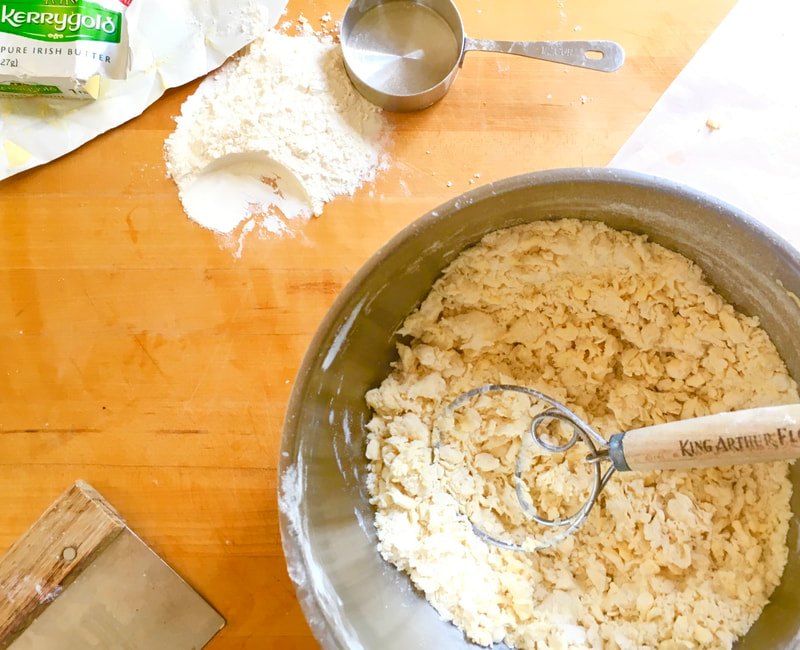
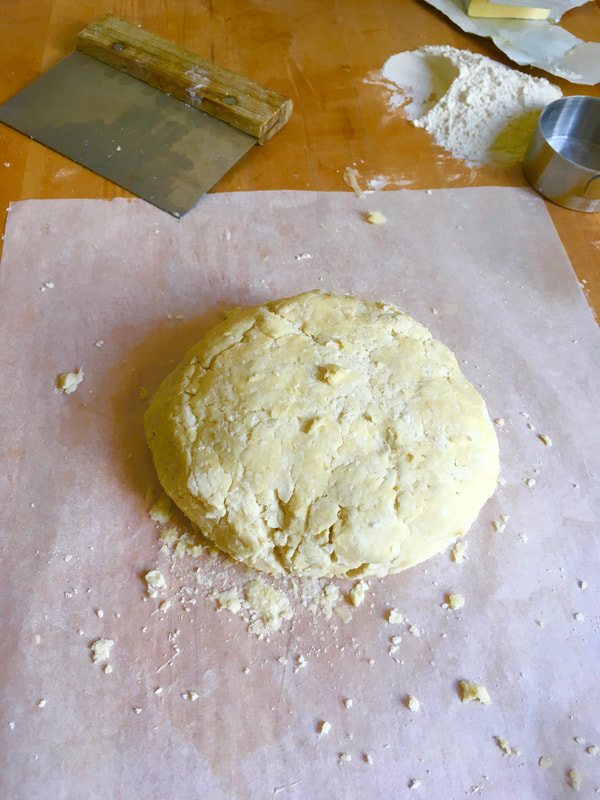
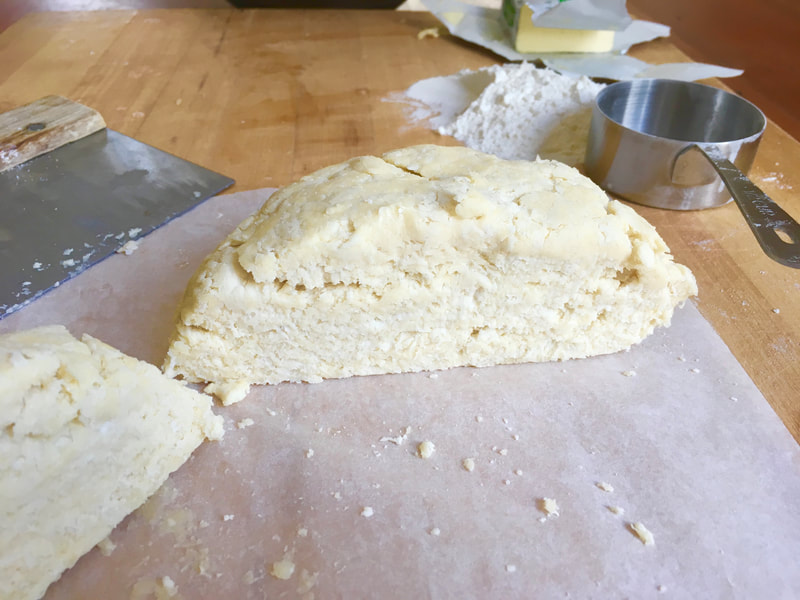

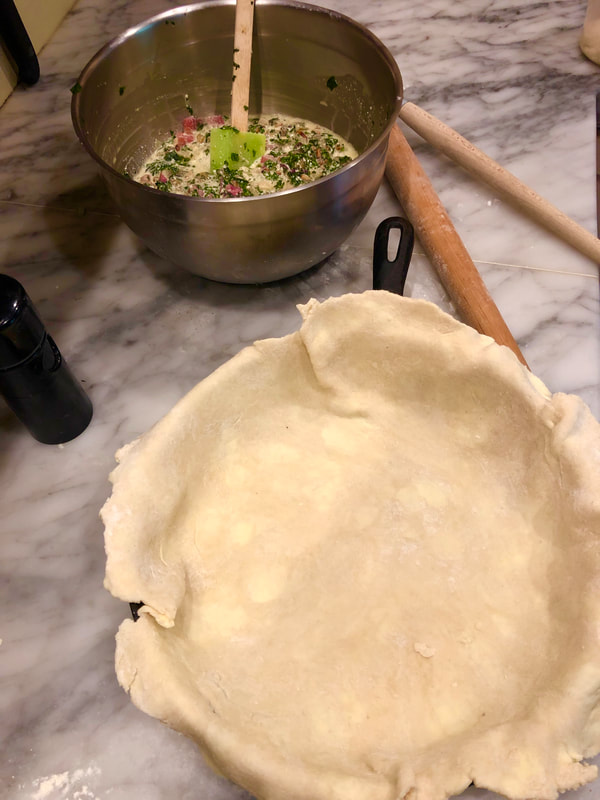

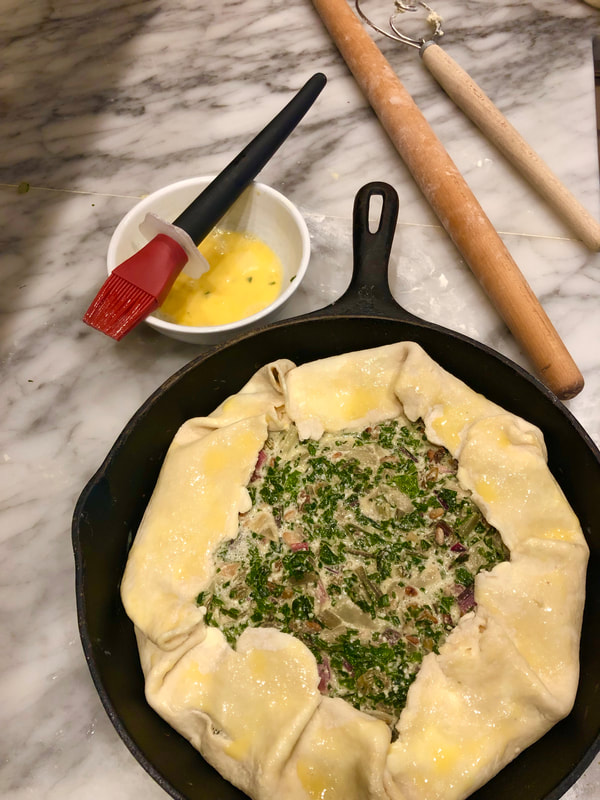




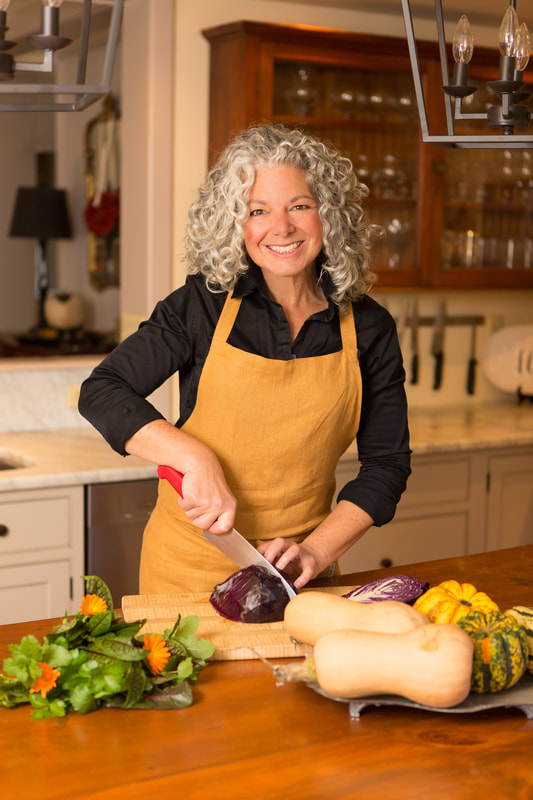

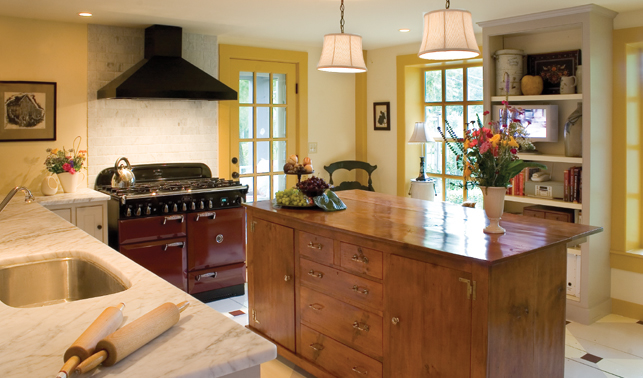
 RSS Feed
RSS Feed